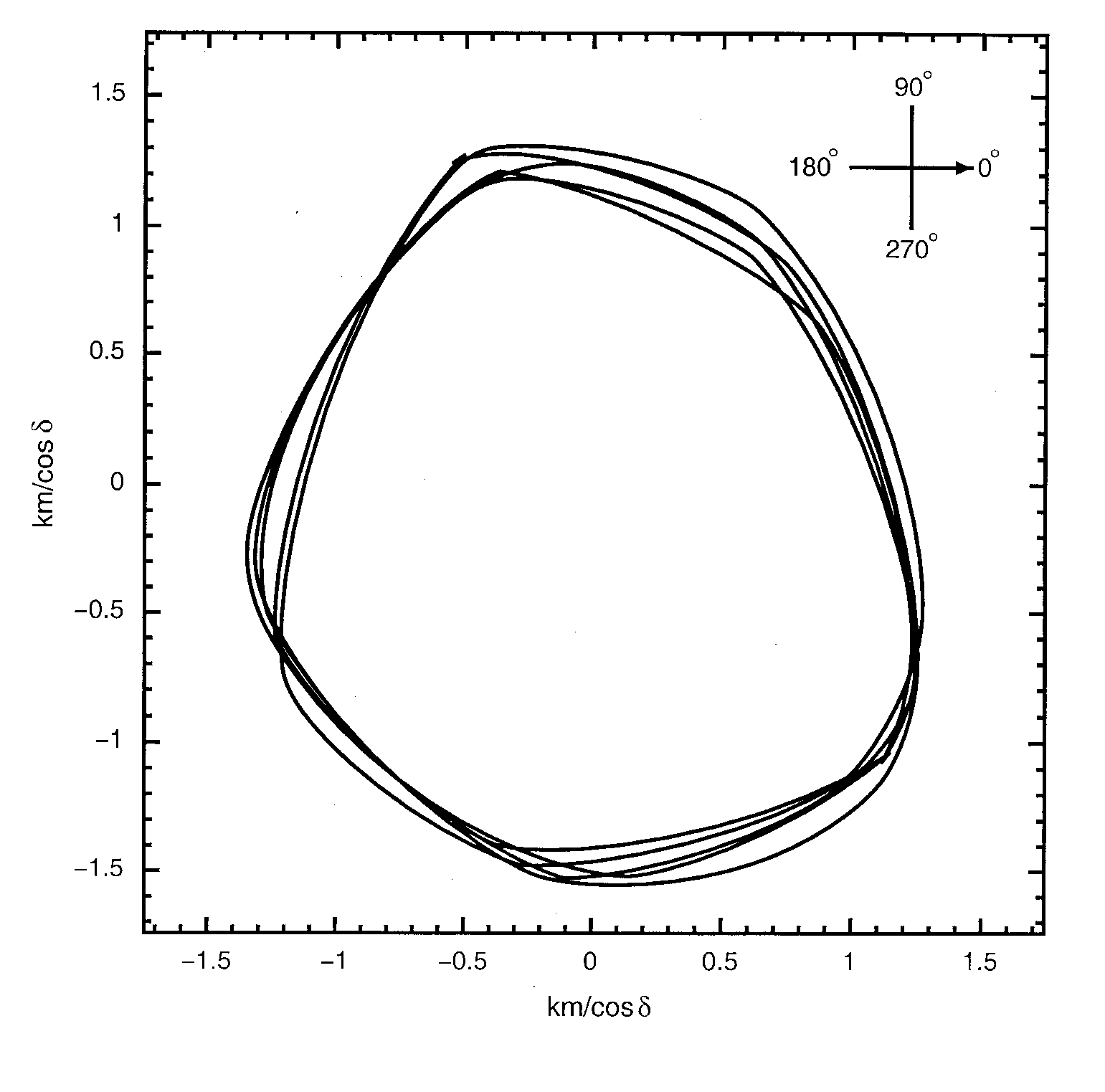
Asteroid Investigations
2100 Ra-Shalom
My current interest is asteroid 2100 Ra-Shalom, which was discovered by E. Helin in 1978 and named to commemorate the Camp David Peace Accord between A. Sadat (Egypt) and M. Begin (Israel). Ra-Shalom is one of the largest of the Aten Earth-crossing asteroids known, and has a diameter of somewhere between 2.4-3.6km. My previous work done at the Jet Propulsion Laboratory used observations from 1984 at the Arecibo Observatory, Puerto Rico. That work resulted in the diameter estimate quoted above and an estimate of the cross-sectional shape.

In August 2000, I made additional observations at Arecibo, this time imaging the asteroid. In 2003, I organized a campaign (funded by a grant from the National Science Foundation) to observe Ra-Shalom with multiple wavelengths; radar imaging at Arecibo, visible lightcurves at Ondrejov Observatory in the Czech Republic (led by P. Pravec), visible spectroscopy at McDonald Observatory (led by F. Vilas, JSC), near-infrared spectroscopy at the Infrared-Telescope Facility (IRTF) in Hawaii (with B. Clark, Ithaca College), and thermal infrared radiometry at Palomar (led by Lucy Lim, Cornell). All of these data are being analyzed jointly to characterize, as completely as possible from the ground, the physical properties of Ra-Shalom.
Related abstracts.
Multiwavelength observations of asteroid 2100 Ra-Shalom: Radar and lightcurves, Shepard et al. 2004, LPSC abstract.
Multiwavelength observations of asteroid 2100 Ra-Shalom: Visible, infrared, and thermal spectroscopy results, Clark et al.2004, LPSC abstract
NEA 2100 Ra-Shalom: K-class and source of CV3 chondrite Grosnaja?, Shepard et al., 2004 DPS abstract.
2002 CE26
In Aug/Sept 2004, we imaged the near-Earth asteroid 2002 CE26 for 4 days. Images showed the existence of a satellite. A copy of the IAU announcement is reproduced below.
Circular No. 8397
Central Bureau for Astronomical Telegrams
INTERNATIONAL ASTRONOMICAL UNION
Mailstop 18, Smithsonian Astrophysical Observatory, Cambridge, MA 02138, U.S.A.
IAUSUBS@CFA.HARVARD.EDU
or FAX 617-495-7231 (subscriptions)CBAT@CFA.HARVARD.EDU
(science)URL http://cfa-www.harvard.edu/iau/cbat.html ISSN 0081-0304
Phone 617-495-7440/7244/7444 (for emergency use only)
....
2002 CE_26
M. K. Shepard and J. Schlieder, Bloomsburg University of
Pennsylvania; M. C. Nolan and A. A. Hine, National Astronomy and
Ionosphere Center; and L. A. M. Benner, S. J. Ostro, and J. D.
Giorgini, Jet Propulsion Laboratory, report: "Arecibo delay-Doppler
radar images (2380 MHz, 12.6 cm) obtained on Aug. 30-31 show that
2002 CE_26 is a binary system. Preliminary estimates of average
diameters, based on range estimates at 75-m resolution, are 3 and
0.2 km. The orbit was seen at approximately superior conjunction
at Aug. 30.076 UT and inferior conjunction at Aug. 31.052. The
average orbital radius, based on these and Doppler-bandwidth
observations, is 5 km. Preliminary estimates, based on apparent
motion of the satellite in range, indicate an orbital period of
approximately 16 hours."
Travel funding for this work was supplied by a Research and Disciplinary Grant from Bloomsburg University. Travel for my student, Joshua Schlieder, was supported by the National Astronomy and Ionosphere Center.